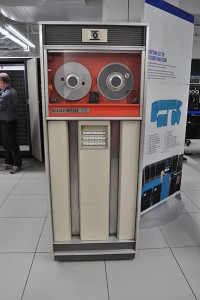 Over at weeklystandard.com, I report on the 43rd Jefferson Lecture, delivered this past Monday by author extraordinaire Walter Isaacson. The biographer of Benjamin Franklin, Albert Einstein, and Steve Jobs identifies a commonality in his subjects—a love for both arts and sciences and a belief in their interrelation as well as their interdependence. In addition (and rather apropos following the previous post), Isaacson is fairly certain that computers will never replace us, despite various reports to the contrary.
Over at weeklystandard.com, I report on the 43rd Jefferson Lecture, delivered this past Monday by author extraordinaire Walter Isaacson. The biographer of Benjamin Franklin, Albert Einstein, and Steve Jobs identifies a commonality in his subjects—a love for both arts and sciences and a belief in their interrelation as well as their interdependence. In addition (and rather apropos following the previous post), Isaacson is fairly certain that computers will never replace us, despite various reports to the contrary.
Isaacson explained:
In 1958, Cornell professor Frank Rosenblatt published a mathematical approach for creating an artificial neural network like that of the human brain, which he called a “Perceptron.” Using weighted statistical inputs, it could, in theory, process visual data. When the Navy, which was funding the work, unveiled the system, it drew the type of press hype that has accompanied many subsequent artificial intelligence claims. “The Navy revealed the embryo of an electronic computer today that it expects will be able to walk, talk, see, write, reproduce itself and be conscious of its existence,” the New York Times wrote. The New Yorker was equally enthusiastic. “The Perceptron, … as its name implies, is capable of what amounts to original thought,” it reported.
That was almost sixty years ago. The Perceptron still does not exist. However, almost every year since then there have been breathless reports about some “about-to-be marvel” that would surpass the human brain, many of them using almost the exact same phrases as the 1958 stories about the Perceptron.
You can read the transcript of the lecture here.
Photo of a CDC 606 tape transport courtesy of Joe Mabel